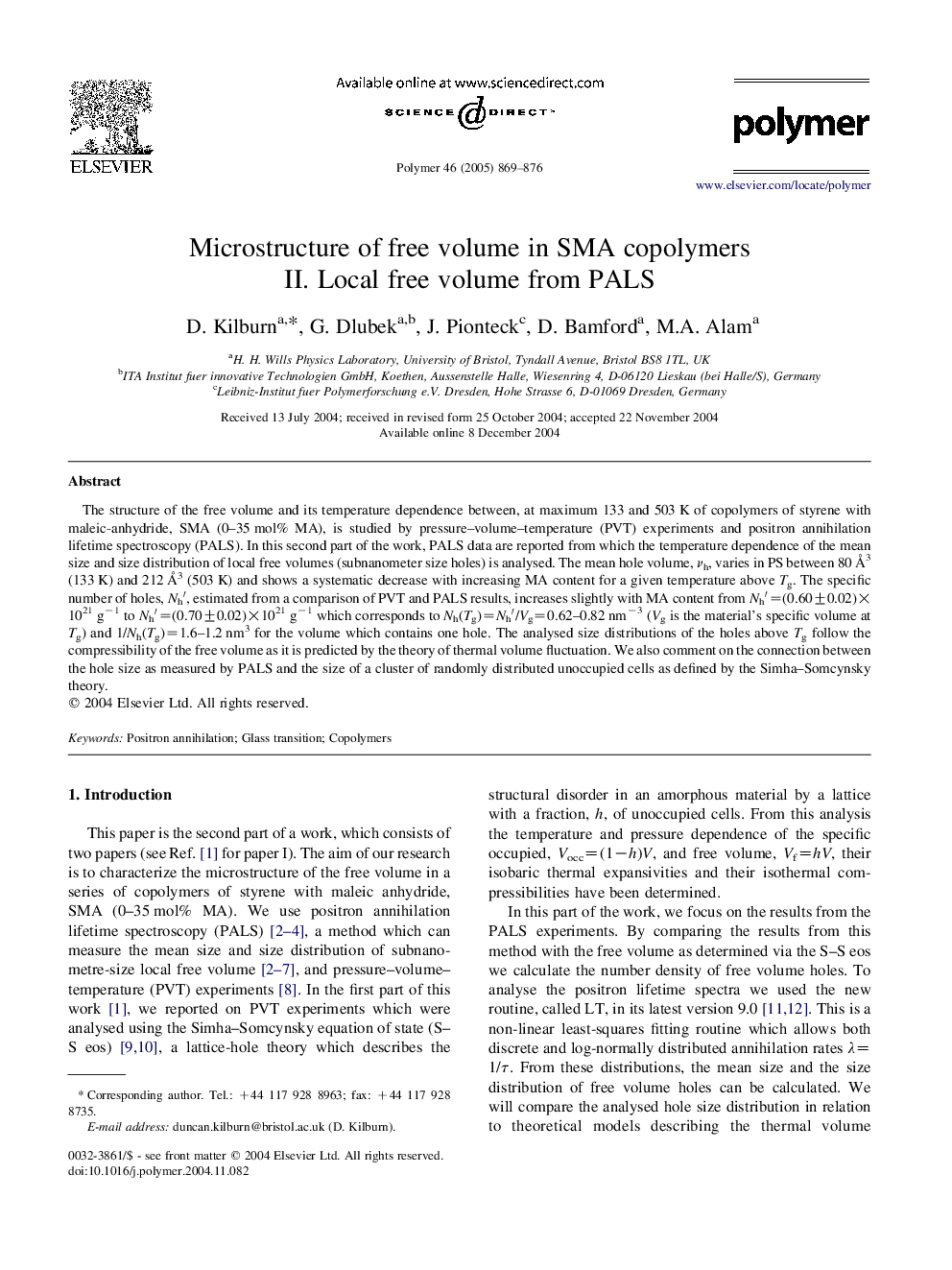| Article ID | Journal | Published Year | Pages | File Type |
|---|---|---|---|---|
| 9559331 | Polymer | 2005 | 8 Pages |
Abstract
The structure of the free volume and its temperature dependence between, at maximum 133 and 503 K of copolymers of styrene with maleic-anhydride, SMA (0-35 mol% MA), is studied by pressure-volume-temperature (PVT) experiments and positron annihilation lifetime spectroscopy (PALS). In this second part of the work, PALS data are reported from which the temperature dependence of the mean size and size distribution of local free volumes (subnanometer size holes) is analysed. The mean hole volume, νh, varies in PS between 80 Ã
3 (133Â K) and 212Â Ã
3 (503 K) and shows a systematic decrease with increasing MA content for a given temperature above Tg. The specific number of holes, Nhâ², estimated from a comparison of PVT and PALS results, increases slightly with MA content from Nhâ²=(0.60±0.02)Ã1021 gâ1 to Nhâ²=(0.70±0.02)Ã1021 gâ1 which corresponds to Nh(Tg)=Nhâ²/Vg=0.62-0.82 nmâ3 (Vg is the material's specific volume at Tg) and 1/Nh(Tg)=1.6-1.2 nm3 for the volume which contains one hole. The analysed size distributions of the holes above Tg follow the compressibility of the free volume as it is predicted by the theory of thermal volume fluctuation. We also comment on the connection between the hole size as measured by PALS and the size of a cluster of randomly distributed unoccupied cells as defined by the Simha-Somcynsky theory.
Related Topics
Physical Sciences and Engineering
Chemistry
Organic Chemistry
Authors
D. Kilburn, G. Dlubek, J. Pionteck, D. Bamford, M.A. Alam,
